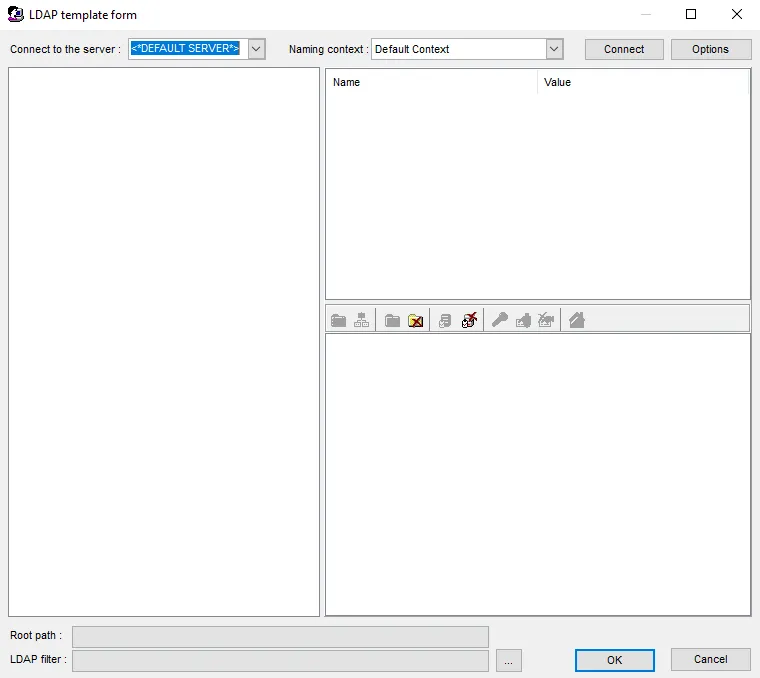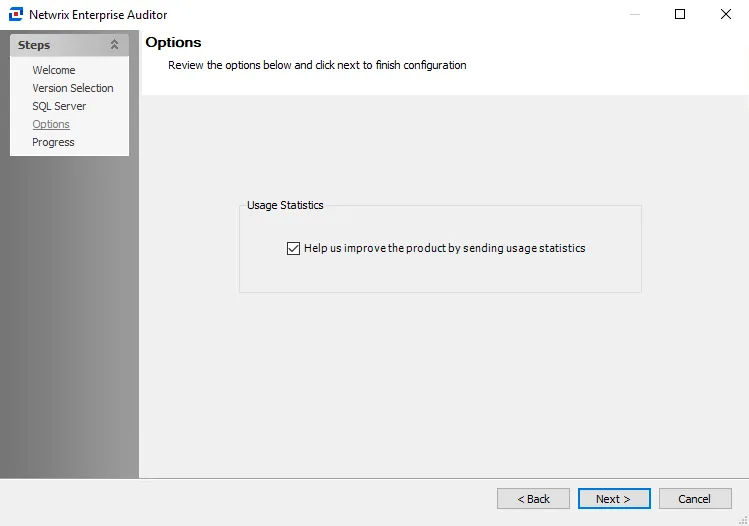LDAP Data Collector
The LDAP Data Collector uses LDAP to query Active Directory returning the specified objects and attributes. For example, a query can be configured to return all user objects at the selected level. Another query can be configured to return a master list of all user objects found within the target domain. Wildcards and LDAP filters can be applied to the query configurations.
The LDAP Data Collector is a core component of Access Analyzer, but it has been preconfigured within the Active Directory Solution. While the data collector is available with all Access Analyzer license options, the Active Directory Solution is only available with a special Access Analyzer license. See the Active Directory Solution topic for additional information.
Protocols
- LDAP
Ports
- TCP 389
Permissions
- Member of the Domain Administrators group
LDAP Query Configuration
The LDAP Data Collector is configured through the LDAP template form. The LDAP template form has the following configuration options:

-
Connect to the server – Use the default domain controller entered in the box, or enter an alternate server
-
Naming context – Select a directory partition from the drop-down list: Default Context, Configuration Context, or Schema Context
-
Connect – Connects to the domain specified. The root folder of the domain is displayed in the left pane of the window.
NOTE: Before clicking Connect, the server port must be configured. To configure the server port, click Options to open the Options window and configure the server port as described in the Options Window section.
-
Options – Opens the Options window to configure connection options and multi-value results options. See the Options Window topic for additional information.
-
List of attributes – Table in the upper right corner lists attributes for the object selected in the left pane
-
Root path – The Root path textbox is populated with the path to the highlighted attributes to be collected
-
LDAP filter – The LDAP filter textbox shows the filters applied to the objects. Click the ellipses (…) to open the Filter Options window. See the Filter Options Window topic for additional information.
The button bar provides additional options for selecting objects and attributes. See the Button Bar topic for additional information.
Options Window
The Options window contains configure connection options and multi-value results options. Click the Options button located in the upper right corner of the LDAP template form to open it.

-
Connect Securely with TL/SSL – Connect using TLS/SSL. If the checkbox is selected, the server port defaults to
636. -
Ignore Certificate Errors – Ignores certificate errors during connection when encrypted communication is enabled
-
Server Port
- If the Connect Securely with TLS/SSL option is selected, use Server Port
686 - If the Connect Securely with TLS/SSL option is not selected, use Server Port
389
- If the Connect Securely with TLS/SSL option is selected, use Server Port
-
Authentication Type
- Negotiate – Default authentication type
- Simple
-
TreeView Node Limit – Typically set to 500
-
Multi-valued attributes – Indicates how multi-valued properties are returned
-
Concatenated – All values are listed in one cell using the delimiter specified
- Delimiter – Symbol used to separate values in the cell
-
First Value Only – Only the first value is listed in the cell
-
Filter Options Window
The Filter Options window is where to add filters to the query. Click the ellipses (…) button located to the right of the LDAP filter box in the LDAP template form to open this window.
-
Extract all objects (no filter) – No filters applied
-
Extract only objects of the following classes – Applies class filter for selected classes
- Users
- Groups
- Contacts
- Computers
- Printers
- Shared Folders
-
Custom Filter – Applies a custom filter configured in the Custom Filter window. See the Custom Filter Window topic for additional information.
Custom Filter Window
The Custom Filter window provides options for creating a complex filter.
Select a Field and Condition from the drop-down lists. Enter a Value for the condition. Click Add to add the filter to the Filter Lines table.
-
Filter Lines will be combined with a logical – Select the AND or OR option. AND is selected by default.
-
Edit Raw Filter – Opens the Raw Filter Edit window
Enter the entire LDAP filter in the textbox. Click Verify to confirm the filter, and then OK to add it to the custom filter list.
-
Clear Filter – Deletes the selected filter
Click OK to save the changes and close the Custom Filter window.
Button Bar
The button bar provides several options for configuring the query.
| Button | Name | Description |
|---|---|---|
| Include sublevels | Include sublevel folders of the selected folder. | |
| Org wildcard | Search for the attribute across multiple domains. | |
| Wildcard the level | Search everything on the selected level. | |
| Unwildcard all levels | Removes the wildcard and returns the search scope to the selected domain. | |
| Include a HostName Tag | Replaces the OU with a HostName Tag. | |
| Remove all HostName Tags | Removes the HostName Tag. | |
| Add Security Properties for Selected Key | Adds the list of security properties. | |
| Select Highlighted Attributes | Adds the highlighted attributes to the list. | |
| Delete the Highlighted Selected Attributes | Deletes the highlighted attributes from the list. | |
| Find the Root Path in the Directory Objects | Returns the root path to the selected root. |